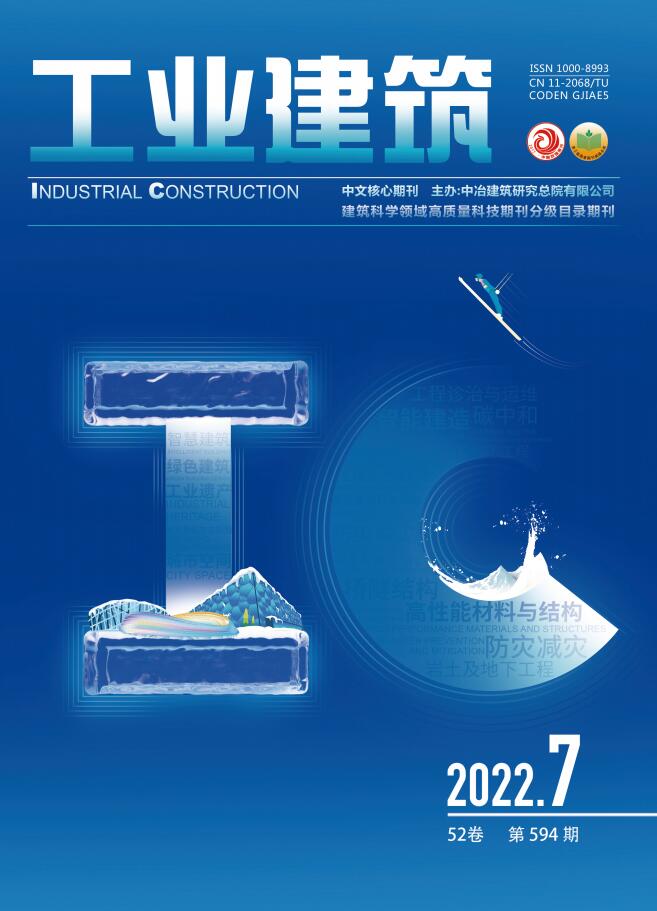| [1] |
MEEHL G A, STOCKER T F, COLLINS W D, et al. Climate change 2013:the physical science basis. Contribution of working group I to the fifth assessment report of IPCC the intergovernmental panel on climate change[M]. New York:Cambridge University Press, 2014.
|
| [2] |
International Energy Agency. Key world energy statistics 2020[EB/OL]. https://www.iea.org/reports/key-world-energy-statistics-2020/emissions.
|
| [3] |
彭琛,江亿,秦佑国.低碳建筑和低碳城市[M].北京:中国环境出版社,2018.
|
| [4] |
MA M, YAN R, DU Y, et al. A methodology to assess China's building energy savings at the national level:an IPAT-LMDI model approach[J]. Journal of Cleaner Production, 2017,143:784-793.
|
| [5] |
邓丰,谭洪卫.以近零能耗为导向的上海地区不同住宅类型的能耗及光伏替代率研究[J].建筑科学,2021,37(4):9-18.
|
| [6] |
HU F, ZHENG X. Carbon emission of energy efficient residential building[J]. Procedia Engineering, 2015,121:1096-1102.
|
| [7] |
毛潘, 杨柳,罗智星.建筑构造生命周期碳排放评价方法研究:以西安地区住宅建筑墙体构造为例[J]. 华中建筑, 2019,37(12):32-37.
|
| [8] |
Yim S, NG S, HOSSAIN M,et al. Comprehensive evaluation of carbon emissions for the development of high-rise residential building[J]. Buildings, 2018,8(11):147.
|
| [9] |
杨崴,羊思静.基于LCA性能的高层住宅建筑设计参数敏感度研究[J]. 建筑节能, 2020,48(12):15-23.
|
| [10] |
刘大龙, 刘加平,杨柳.气候变化下我国建筑能耗演化规律研究[J]. 太阳能学报, 2013,34(3):439-444.
|
| [11] |
WAN K K W, LI D H W, PAN W, et al. Impact of climate change on building energy use in different climate zones and mitigation and adaptation implications[J].Applied Energy, 2012,97:274-282.
|
| [12] |
REN Z, CHEN Z, WANG X. Climate change adaptation pathways for Australian residential buildings[J]. Building and Environment, 2011,46(11):2398-2412.
|
| [13] |
李红莲.建筑能耗模拟用典型气象年研究[D]. 西安:西安建筑科技大学,2016.
|
| [14] |
ALCAMO J, ROEHRL R A, VICTOR N. Special report on emissions scenarios. Special report of working group Ⅲ of the intergovernmental panel on climate change[M]. Montana:Betascript Publishing, 2000.
|
| [15] |
YANG X, HU M,WU J,et al. Building-information-modeling enabled life cycle assessment:a case study on carbon footprint accounting for a residential building in China[J]. Journal of Cleaner Production, 2018,183:729-743.
|
| [16] |
中国人民共和国生态环境部. 2019年度减排项目中国区域电网基准线排放因子[EB/OL]. https://www.mee.gov.cn/ywgz/ydqhbh/wsqtkz/202012/t20201229_815386.
shtml.
|
| [17] |
PENG J, LU L,YANG H. Review on life cycle assessment of energy payback and greenhouse gas emission of solar photovoltaic systems[J]. Renewable and Sustainable Energy Reviews, 2013,19:255-274.
|
| [18] |
仓玉洁,罗智星,杨柳,等.城市住宅建筑物化阶段建材碳排放研究[J]. 城市建筑, 2018(17):17-21.
|
| [19] |
赵若楠,董莉,白璐,等.光伏行业生命周期碳排放清单分析[J]. 中国环境科学, 2020,40(6):2751-2757.
|
| [20] |
马洁.海绵城市建设典型措施的碳源解析和碳排放研究[D]. 太原:山西农业大学, 2018.
|
| [21] |
吴淑艺.基于工程量清单的建筑工程碳排放研究[D].福州:福建农林大学, 2017.
|
| [22] |
杨伟同.基于全生命周期的洛南乡村住宅低碳设计研究[D]. 西安:西安建筑科技大学,2020.
|
| [23] |
郑婷.建筑构件的生命周期碳排放和经济性综合评价方法研究[D]. 西安:西安建筑科技大学,2019.
|
| [24] |
毛潘, 杨柳,罗智星.建筑构造生命周期碳排放评价方法研究:以西安地区住宅建筑墙体构造为例[J]. 华中建筑, 2019,37(12):32-37.
|
| [25] |
上海市生态环境局.电力热力行业企业碳排放基准及相关参数[EB/OL].https://sthj.sh.gov.cn/.
|
| [26] |
GUO H, LIU Y,MENG Y,et al. A comparison of the energy saving and carbon reduction performance between reinforced concrete and cross-laminated timber structures in residential buildings in the severe cold region of China[J]. Sustainability, 2017,9(8):1426.
|
| [27] |
北京市生态环境局[EB/OL]. http://sthjj.beijing.gov.cn/bjhrb/resource/cms/article/679767/10938921/2021021817260680676.pdf.
|


 Login
Login Register
Register E-alert
E-alert







 DownLoad:
DownLoad: